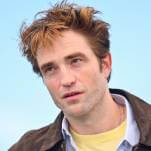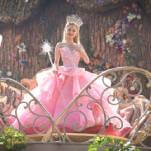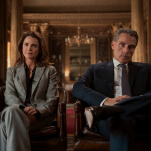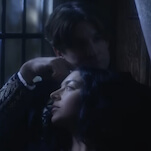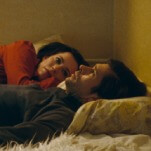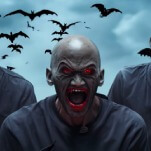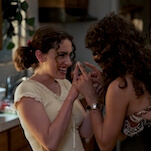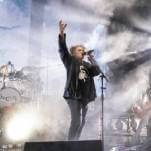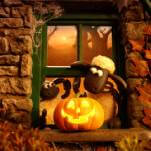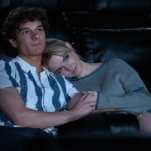Sade

If the Marquis de Sade in Benoît Jacquot's low-key, intelligent biopic Sade were to meet his doppelgänger from Philip Kaufman's Quills, the two would find some common ground on issues of freedom, religion, and moral hypocrisy, and could even question who the real sadists are in late-18th-century France. But as played with minimal affect by the great actor Daniel Auteuil, Jacquot's Sade might wonder what Geoffrey Rush's gesticulating buffoon was going on about, especially in an age without awards shows. Though both films lean toward a generous take on the historical Sade, Quills has a more limited agenda, massaging a late period in Sade's life to score contemporary points on state-sanctioned morality and freedom of expression. Jacquot (The School Of Flesh, Seventh Heaven) isn't nearly so ambitious, yet his minor-scale chamber piece seems far more psychologically credible, casting its hero as a quiet, insinuating presence, a man of ideas muzzled by men of action. Smartly framed in a short period during Sade's middle age, after he gained notoriety for his activities and before his placement in an asylum, Sade takes place almost entirely at Picpus, a country estate where the Jacobins held their disgraced aristocrats. The comparative luxury of his imprisonment is owed to an ex-mistress (Marianne Denicourt) who beds one of Robespierre's top aides (Grégoire Colin), a young man possessed by jealousy and violent impulses. As the world outside Picpus rages with the Terror—and some of the guillotine scraps are dumped on estate grounds—Sade catches the attention of a virginal teenager (Isild Le Besco) and leads her through a sexual and intellectual rite of passage. For most of the film, Jacquot and Auteuil do almost nothing to suggest Sade is anything more dangerous than a provocative writer and philosopher; certainly they don't depict him as the privileged ogre who brutalized the less fortunate for his own gratification. But in keeping with his concept that the mind and the body are inseparable, Sade builds to an extraordinarily powerful centerpiece when the two come together, fusing fear and desire, pleasure and pain, innocence and enlightenment. Jacquot scatters subtle observations about the man and the period throughout the film, but he really stakes the entire enterprise on a single scene, the first and only time that Sade's thoughts are set into motion. Fortunately, it's the strongest scene in the movie, reverberating with ideas that illuminate everything that precedes and follows it.

